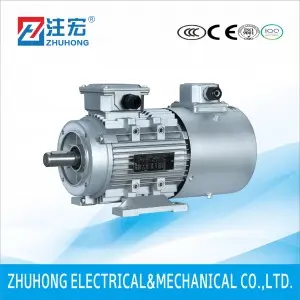1. The structural difference between ordinary motors and variable frequency motors
1. Higher insulation level requirements
Generally, the insulation level of variable frequency motors is Class F or higher. The insulation strength to ground and the insulation strength of the wire turns should be strengthened. In particular, the ability of the insulation to withstand impulse voltage should be considered.
2. The vibration and noise requirements of variable frequency motors are higher
The variable frequency motor must fully consider the rigidity of the motor components and the entire body, and try to increase its natural frequency to avoid resonance with each force wave.
3. Variable frequency motors have different cooling methods
Frequency conversion motors generally use forced ventilation cooling, that is, the main motor cooling fan is driven by an independent motor.
4. Different requirements for protective measures
Bearing insulation measures should be adopted for variable frequency motors with a capacity exceeding 160kW. Mainly, it is easy to produce magnetic circuit asymmetry, and also produce shaft current. When the current generated by other high-frequency components acts together, the shaft current will greatly increase, resulting in bearing damage, so insulation measures are generally required. For constant power variable frequency motors, when the speed exceeds 3000/min, special high-temperature resistant grease should be used to compensate for the temperature increase of the bearings.
5. Different cooling systems
The variable frequency motor cooling fan is powered by an independent power supply to ensure continuous heat dissipation.
2. The difference in design between ordinary motors and variable frequency motors
1. Electromagnetic design
For ordinary asynchronous motors, the main performance parameters considered when redesigning are overload capacity, starting performance, efficiency and power factor. As for the variable frequency motor, since the critical slip is inversely proportional to the power supply frequency, it can be started directly when the critical slip is close to 1. Therefore, overload capacity and starting performance no longer need to be considered too much, but the key issue to be solved is how to improve the motor’s performance. Adaptability to non-sinusoidal power supplies.
2. Structural design
When designing the structure, it is also important to consider the impact of non-sinusoidal power supply characteristics on the insulation structure, vibration, and noise cooling methods of the variable frequency motor.
Post time: Jan-16-2024








